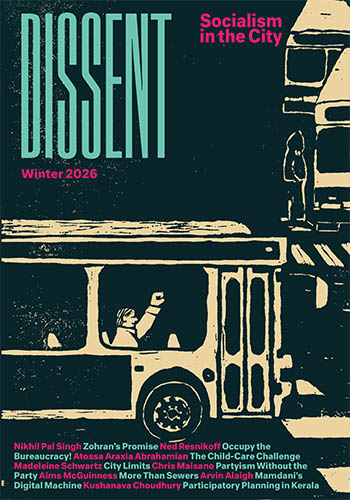The Green Movement and the Dignity of Nonviolence in Iran
The Green Movement and the Dignity of Nonviolence in Iran
Jahanbegloo: Green Mvmt., Part II?
RECENT RALLIES and protests in Iran proved that the Green Movement has not died, despite a crackdown since the disputed 2009 presidential election. It seems that the uprisings in Tunisia and Egypt have reenergized Iranian civil society, helping it become firmer and more outspoken in its demand for democratization in Iran. After twenty months of imprisonments, torture, executions, and house arrests of the opposition’s key figures, the scale of the protests in Iranian cities contrasts profoundly with government affirmations that there is general popular support for the Islamic regime.
In the past weeks, tens of thousands of defiant anti-government protesters have clashed with security officials in Tehran, Shiraz, and Kurdistan. These demonstrations seemed more radicalized in tone than those in 2009, though still nonviolent in nature. The protesters have defied the official ban on rallies, targeting by name the Iranian theocracy and its leader Ayatollah Khamenei, who has been in power for as long as many of the Middle East rulers who have faced opposition in recent weeks.
The official response to the protests has been harsh. State television branded the protesters as “hypocrites, monarchists, thugs, and seditionists,” and hard-line Iranian lawmakers started a “campaign for executing the leaders of the opposition.” Some Iranian Revolutionary Guard Corps (IRGC) commanders, however, have expressed concern that servicemen sympathize with the opposition. According to the Daily Telegraph, “Senior officers in Iran’s Revolutionary Guards have written a letter to their commanding officer demanding assurances that they will not be required to open fire on anti-government demonstrators.” The Egyptian military, of course, stopped short of banning strikes and protests and instead attempted to reassure opposition leaders that it was genuinely committed to a democratic transition in Egypt. The IRGC’s senior leadership, meanwhile, has tightened its grip on Iranian society by driving the nation’s economic and political policies and overseeing Iran’s nuclear and missile programs.
Established in the aftermath of the 1979 Islamic Revolution to defend the Islamic Republic against domestic and foreign threats, the IRGC has a privileged status at every level of Iranian society, benefiting, for example, its ordinary members in university admissions and giving its leaders access to shares in Iran’s telecommunications monopoly. The IRGC also carries out operations in other countries, including the training and arming of the Hezbollah militia in Lebanon.
In 2005, with the election of Mahmoud Ahmadinejad (long affiliated with the IRGC), the Guard’s political clout grew. Its denunciation and suppression of the post-election protests in 2009 were perceived by many as the beginning of the consolidation of a military state, now theocratic only in name. One of the most important implications of this development is that the IRGC is now able to confront and subdue, by any means necessary, all those who actually or potentially pose a threat to the stability of the Islamic Republic. The power of the IRGC means that the civic movement in Iran has a much harder struggle ahead of it than those in Tunisia and Egypt. The Iranian regime is more ruthless and systematic in repressing its opponents than either Ben Ali or Mubarak were. It also has a stronger ideological base than the Arab regimes in the Persian Gulf region. Iranian leaders believe they legitimately represent their country, granting them the right to govern according to their religious beliefs. In most of President Ahmadinejad’s speeches, for example, there are references to the twelfth Shia imam, who long ago went into hiding and will one day return to rule the world. Ahmadinejad has also announced his intention to return to the atmosphere of the first decade of the Revolution in order to revive revolutionary values.
Such rhetoric is an act of self-defense used to justify the suppression of all forms of dissent, at a time when the regime is experiencing its worst crisis of legitimacy since its founding. Once again, pro-democracy demonstrations in Tehran and other Iranian cities have eroded the image of the regime as the vanguard of the resistance against oppressors in the Muslim world. The recent revolts of the Arab streets against corrupt dictatorships in Tunisia, Egypt, Libya, Algeria, Jordan, and Bahrain were more synchronized with the pace and rhythm of nonviolent demonstrations in Tehran than with the violent actions of truncheon-wielding Basiji thugs. The regime has based much of its international appeal upon being a righteous Islamic answer to corrupted regimes around the Middle East; now the government’s anti-democratic domestic policies are steadily sweeping away its legitimacy as “popular” and “Islamic.”
What is certain is that the current power holders have lost moral credibility by virtue of their brutal crackdowns on Iranian civil society. Moreover, by asserting the republican principle of popular sovereignty, the Green Movement has posed a counter-claim of legitimacy against the Iranian theocracy. The Green Movement faces a troubling situation, but it is banking on its strategy of nonviolence as moral capital. The Movement is defining itself distinctly and democratically, exposing the intellectual weaknesses and political brutalities of the Islamic regime.
Ramin Jahanbegloo is associate professor of political science at the University of Toronto and author, most recently, of Talking Politics: Bhikhu Parekh in Conversation with Ramin Jahanbegloo (Oxford University Press, 2011). He received the 2009 Peace Prize awarded by the Association for the United Nations in Spain.






